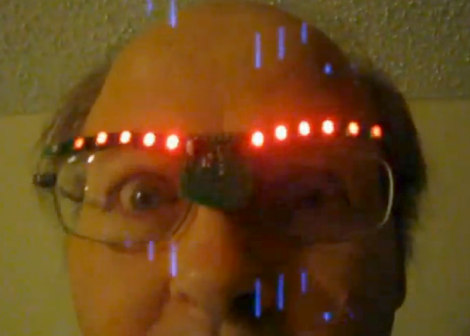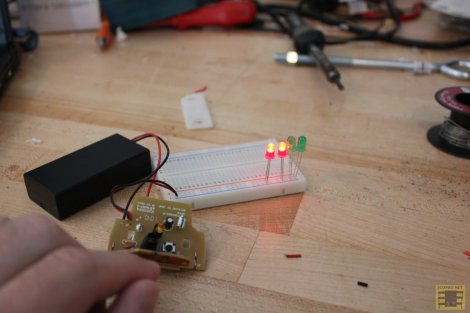
Regular glasses are okay, but these light up and respond to your movement. [Dr. Iguana] is at it again, designing a very interestingly shaped PCB to augment your visual augmentation devices.
The circuit board has two thin curving wings which conform to the shape of a pair of glasses. In the middle there’s a larger area that holds most of the components but it’s still smaller than a common coin cell battery that powers the device. Over each eye there are a half dozen red LEDs which are driven by a PIC 12F1840. It can flash a bunch of patterns the but the interactivity is the real gem of the project. The doctor included an MMA8450 3-axis accelerometer. As you can see in the clip after the break, shaking your head this way and that will be reflected in the pattern of lights.
Continue reading “LED Cyber Eyes; More Nerdy Than Just Taping Your Glasses”
















